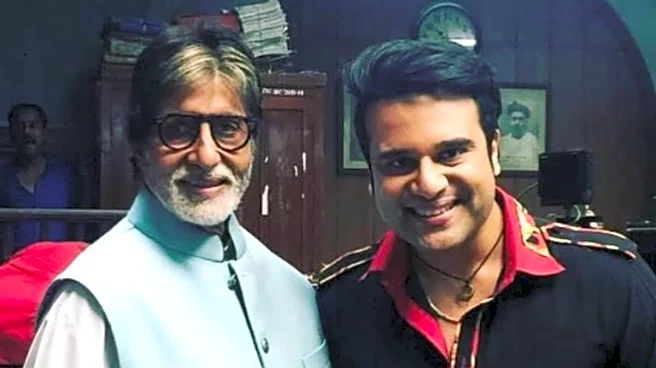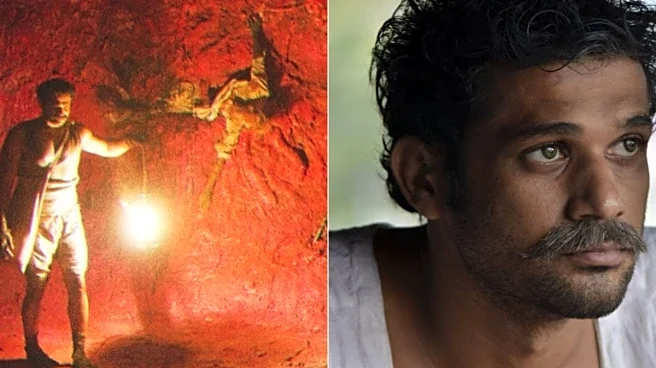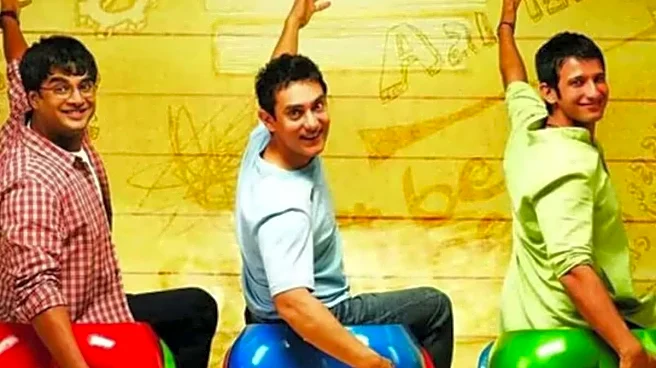Every Friday, a new Bollywood film promises something “never seen before”, yet, by the time the trailer drops, viewers have in some form already seen it. Whether it’s a South Indian blockbuster getting
a Hindi facelift or a Korean drama repackaged for a local audience, India’s biggest film industry seems caught in a creative deja vu.
Majority of Hindi releases in the last five years have been remakes, sequels, or “inspired” stories, according to film trade estimates. What’s happening isn’t just a trend; it’s a symptom of an industry that has forgotten how to take risks
and how to trust its audience.It’s a cycle that keeps repeating but what this trend reveals isn’t just a creative shortcut– it’s a deeper, structural shift in how India’s biggest film industry operates and what it thinks audiences want.
Why Bollywood Keeps Returning to Familiarity?
There was a time when remakes worked like a charm. Between 2015 and 2020, Hindi remakes of South Indian films such as Drishyam and Arjun Reddy, proved to be safe commercial bets. These were stories that had already been tested on regional audiences, carrying built-in appeal and emotional resonance.
But the post-pandemic entertainment economy changed everything.
The latest FICCI–EY Media and Entertainment Report (2024) shows that audience spending on Hindi cinema has fallen by nearly 15 percent since 2022, while regional industries like Tamil, Telugu, and Malayalam films grew in both theatrical and OTT viewership. The same report highlights that original scripts especially those addressing social, emotional, or culturally specific themes are now outperforming formula-driven stories.
The reason, is exposure. With streaming platforms making regional and international films accessible with subtitles, audiences have already seen the originals. The novelty of remakes has worn off; ten years ago, most Hindi audiences didn’t know where a film was copied from. Today, they’ve already watched the original on Netflix.
Do Remakes Translate To More Business?
From a producer’s perspective, a remake is a business decision, not an artistic one. The logic is straightforward, if a story worked once, it’ll probably work again. Scripts are cheaper to acquire, production risk is lower, and the marketing narrative practically writes itself.
But this formula has started showing cracks. In 2025, several highly anticipated remakes- Deva, Sarfira, Shehzada, underperformed despite strong marketing pushes. A 2025 data analysis by Box Office India noted that average returns for remakes dropped by nearly 40 percent compared to 2019 levels.
This marks a shift, audiences are no longer impressed by familiar templates with famous faces. Instead, they are gravitating towards sincerity and fresh narratives.
How Has OTT Streaming Changed Viewer’s Idea Of Cinema?
A 2021 report by RBSA Advisors projects India’s video over-the-top (OTT) market will reach $12.5 billion by 2030, growing from an estimated $1.5 billion in 2021, a growth which is fundamentally reshaping film consumption across genres. Language barriers have dissolved, viewers are now used to diverse cinematic languages the realism of Malayalam cinema, the narrative power of European films, and the aesthetics of Korean dramas.
As a result, Bollywood’s standard storytelling pattern– predictable arcs, glossy romance and extended duration, feels increasingly outdated.
In a 2024 YouGov India survey, 68 percent of urban respondents said they now prefer “subtle and realistic” storytelling over “larger-than-life entertainment.”
That’s why a film like Saiyaara, a small-budget romantic drama without big stars could emerge as one of the most profitable Hindi films of 2025.
All About The Saiyaara Effect
Released by Yash Raj Films in mid-2025, Saiyaara featured debutants Ahaan Panday and Aneet Padda. With no major hype or franchise link, few expected it to succeed, but within weeks, it crossed ₹100 crore globally, riding on word-of-mouth and emotional resonance.
The story followed a young couple grappling with memory loss, which prompted online speculation that it was inspired by the 2004 Korean film ‘A Moment to Remember‘. Reddit threads compared posters, screenshots, and even scenes. Yet what stood out was not whether it was an “official remake,” but how it felt distinctively Indian in its emotion, pace and language.
Inspired or not, distinction matters because where most Bollywood remakes collapse under literal copying, Saiyaara succeeded by interpreting, not reproducing. It’s a subtle but vital difference, one that might signal a creative recalibration.
Is Bollywood Really Out of Original Movie Ideas?
Filmmakers and writers inside the system have a more complex view. Many insist that Bollywood isn’t short of creative ideas, it’s short of structural support for them. Studios increasingly favor “bankable” IP, intellectual property that can be monetized across platforms rather than investing in standalone ideas. The rise of franchise culture with movies like Singham, Tiger, Pushpa mirrors Hollywood’s own addiction to universes and sequels.
Hollywood‘s own obsession with franchises has started showing cracks too. Big-ticket releases like The Marvels, Madame Web, The Flash, and Aquaman and the Lost Kingdom arrived with massive hype but fizzled out fast. The disappointment feels sharper because audiences know the source material, decades of rich, layered comic storytelling that these films rarely live up to.
Fans are quick to spot plot holes, hollow character build-up, and the missing spark that once defined superhero cinema. What was once thrilling now feels recycled, proving that bigger universes can’t replace genuine storytelling or the emotional magic that made these heroes iconic.
A scroll through Reddit’s r/Bollywood forum captures a candid snapshot of audience fatigue. “We don’t hate remakes,” wrote one user. “We hate lazy ones. Take inspiration, sure, but give us something new to feel.” Another pointed out that the exposure to global cinema has shifted expectations, “After watching Malayalam and Korean films, it’s hard to accept Bollywood’s watered-down versions. We want honesty, not imitation.” Such feedback isn’t just online chatter, it reflects a real market response. In simple terms, if a story doesn’t feel real, audiences won’t watch it or recommend it.
Is There A Cultural Cost of Repetition In Cinema?
Bollywood’s reliance on remakes isn’t just a creative concern, it’s cultural. Cinema has historically mirrored India’s evolving identity, from the idealism of Nehruvian-era where Indian films were deeply influenced by the newly independent nation’s hopeful, socialist, and secular vision with movies like Awara(1951), directed by Raj Kapoor, this film captured the post-independence aspirations and anxieties of a young India or Mother India (1957), with its “nationalist epic” directed by Mehboob Khan, the film was a powerful symbol of newly independent India. It followed the struggles of a poor but resilient peasant woman who embodies the virtuous spirit of the nation to the urban angst of the 2000s.
Films like Dil Chahta Hai (2001), which captured the transition from college life to adulthood in metropolitan India, where three friends with different approaches to love and relationships navigate uncertainty and a drifting friendship or Dev.D (2009), a modern interpretation of the classic Devdas story exploring a young man’s self-destructive path, fueled by substance abuse and repressed emotions, offering a gritty look at the despair beneath the surface of urban life.
But a culture that keeps rehashing the same stories risks stagnation. The absence of fresh storytelling also sidelines new voices, first-time writers, regional directors, and indie storytellers who don’t fit the formula. Their stories remain in folders, waiting for courage more than opportunity. Movies like Laapataa Ladies which was based on research into gender discrimination and rural power structures gave original a whole new meaning.
In 2025, Bollywood stands at an inflection point. Its audience is global, connected, and no longer content with carbon copies. The industry can either chase nostalgia or reassert its creative confidence.
Films like Saiyaara, Andhadhun, Article 15, Laapataa Ladies and Tumbbad prove that originality is not extinct, just underfunded. What the industry needs is not another borrowed script, but a renewed faith in its own imagination.





/images/ppid_a911dc6a-image-176027964003372773.webp)

/images/ppid_a911dc6a-image-176022009685639531.webp)
/images/ppid_a911dc6a-image-176021304778044274.webp)
/images/ppid_a911dc6a-image-176028307445321649.webp)

/images/ppid_a911dc6a-image-176007309472928190.webp)
